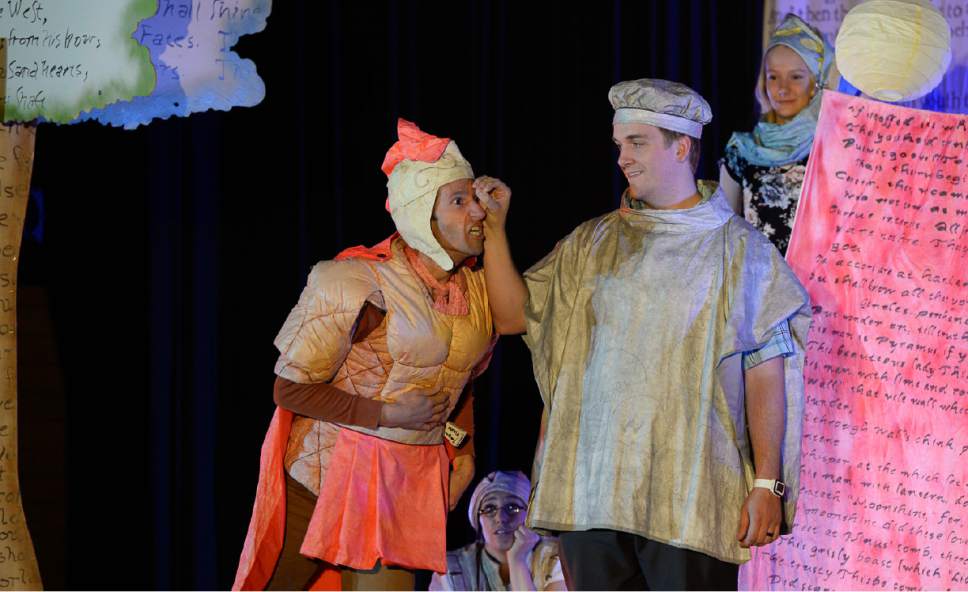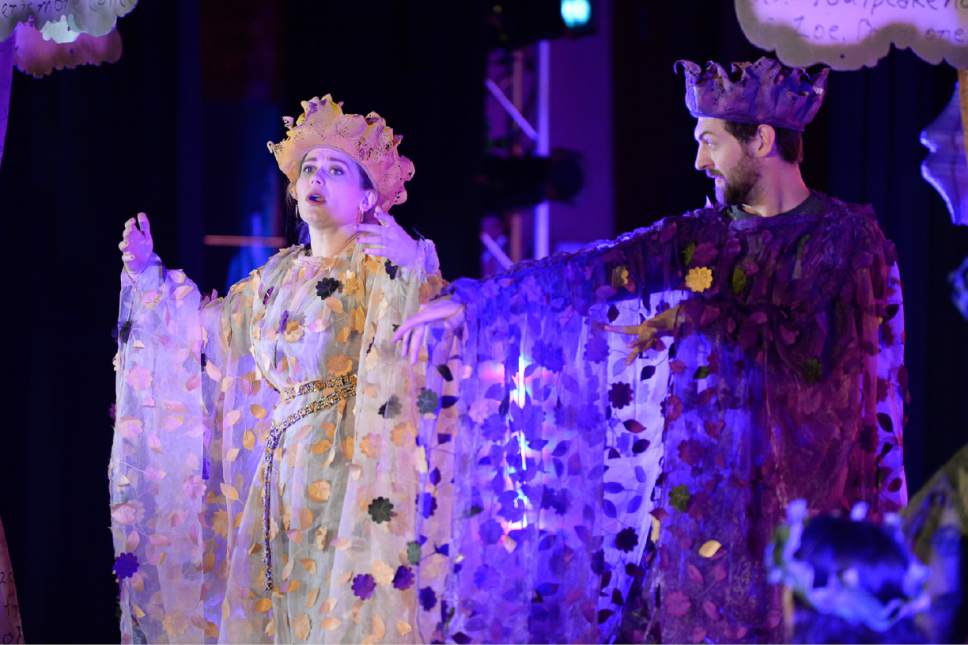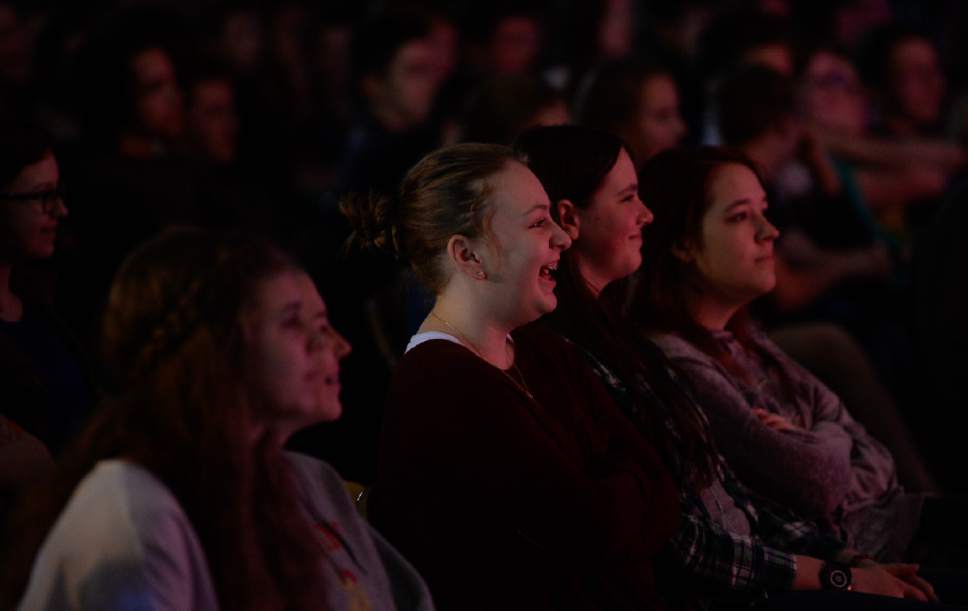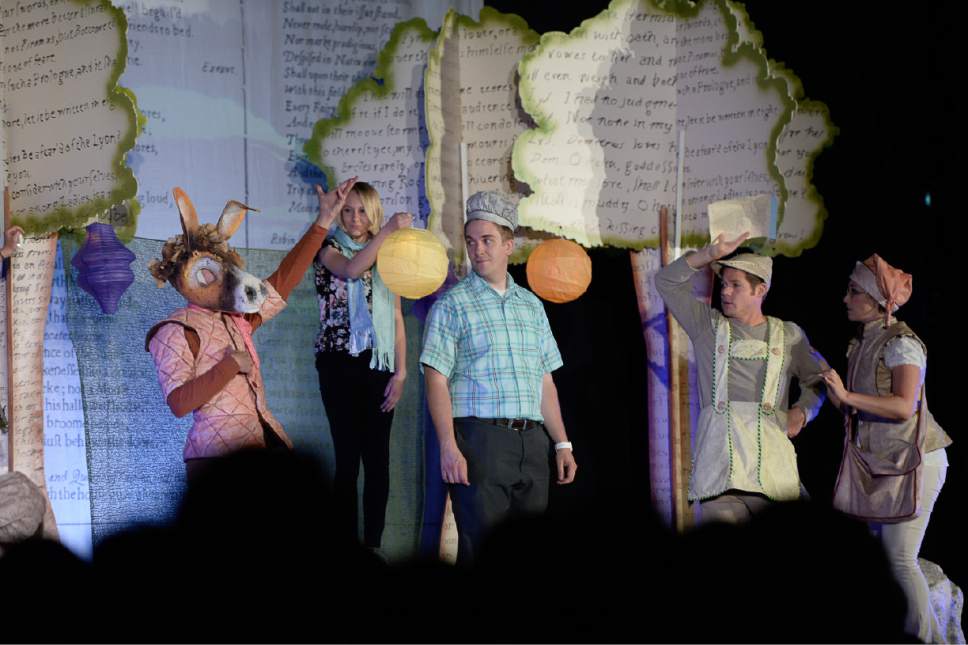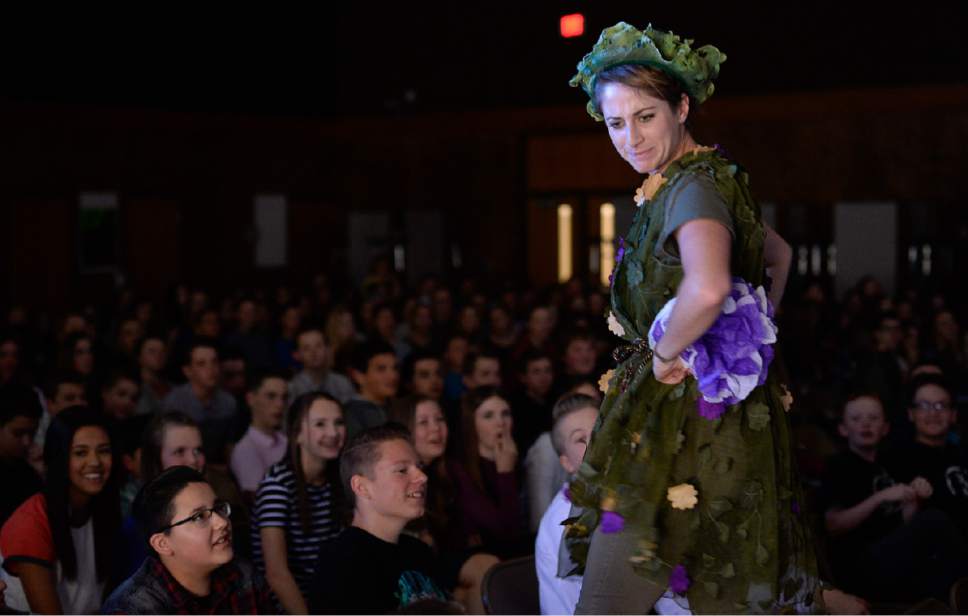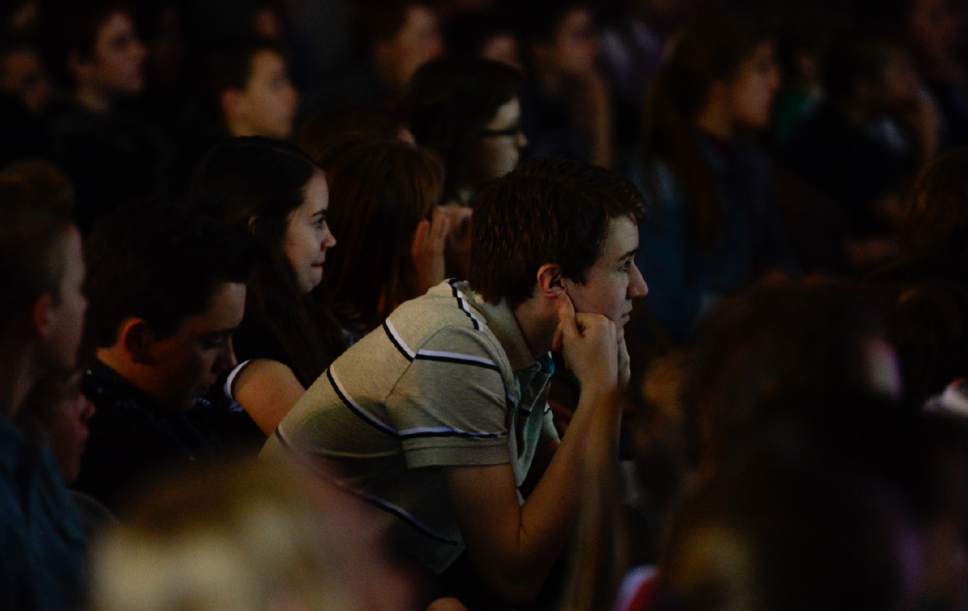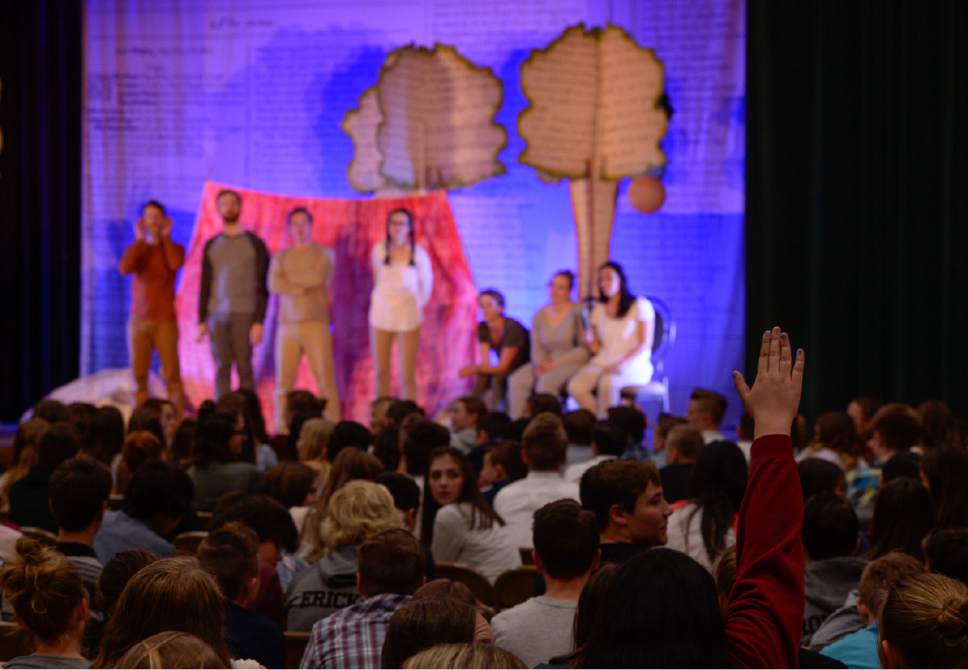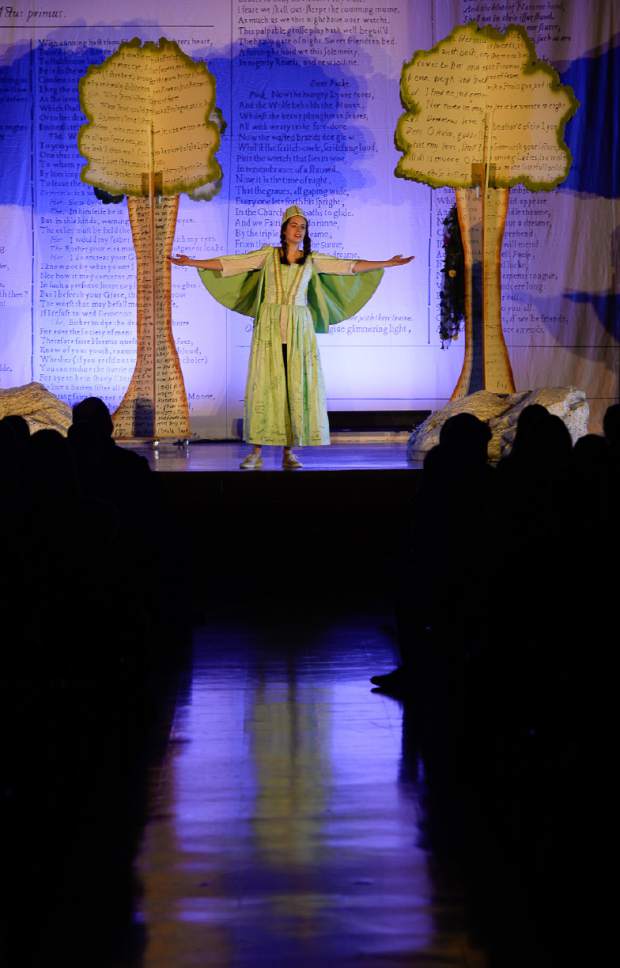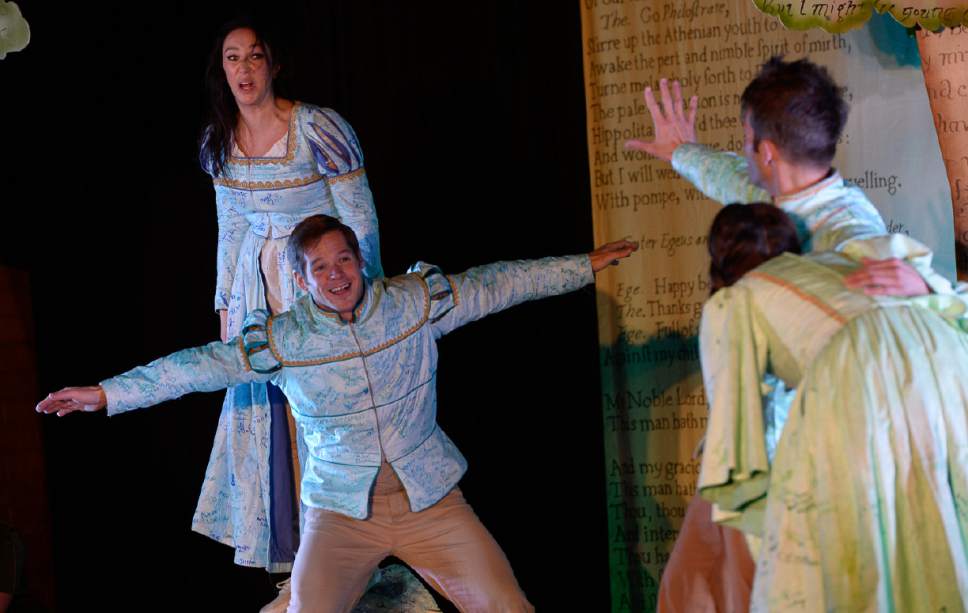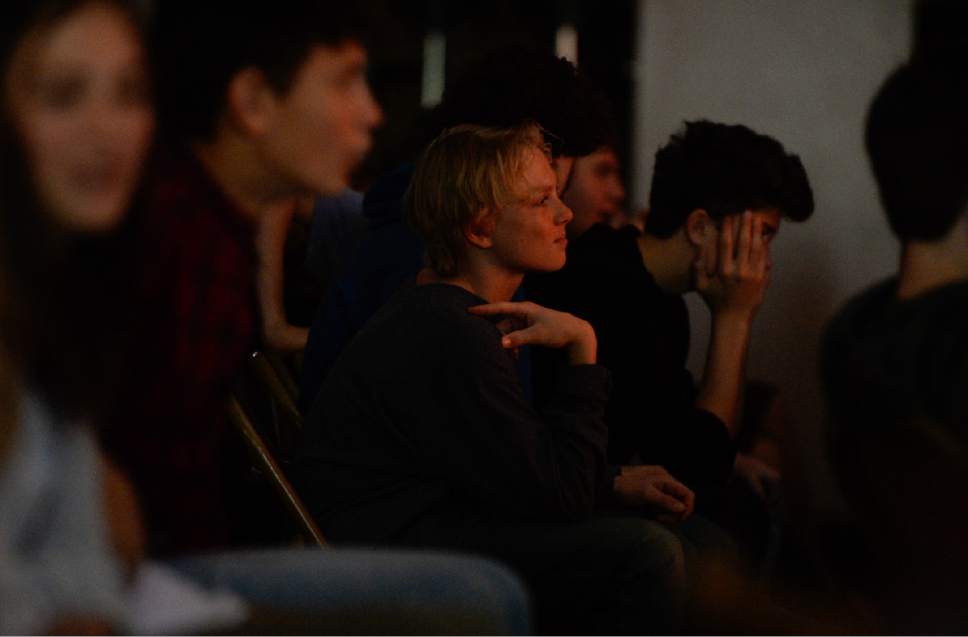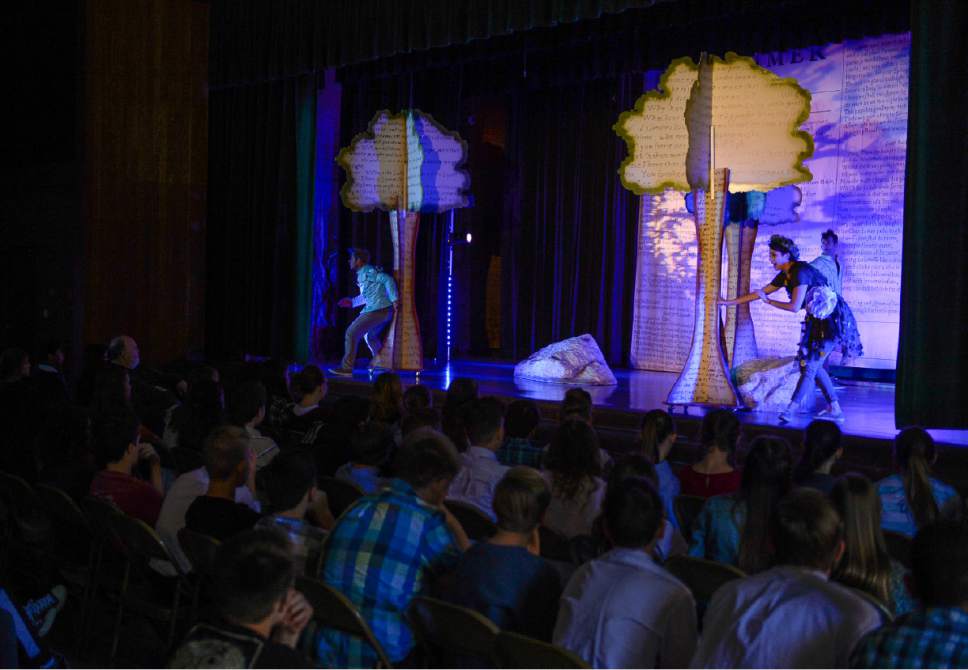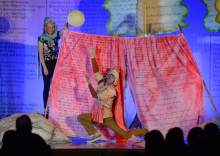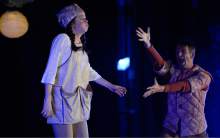This is an archived article that was published on sltrib.com in 2017, and information in the article may be outdated. It is provided only for personal research purposes and may not be reprinted.
Before each performance of "A Midsummer Night's Dream," Utah Shakespeare Festival actors thread through audiences carrying felt pens. A bit anachronistic, perhaps, but a quill would be so cumbersome as a tool to get theatergoers to add graffiti to their costumes.
Write the name of something or someone you love on our backs, the actors say. "We want to take a little piece of you everywhere we go," is how Brandon Burk, who plays Lysander, explains the concept to students.
Living the story by writing on costumes exemplifies the spirit of the Cedar City theater company's annual educational-outreach tour, which plays in a variety of venues ranging from school cafegymatoriums to community centers and correctional facilities. This year, "Midsummer" will reach 25,000 students over 14 weeks in five Western states, including several performances this week along the Wasatch Front.
This year's tour serves as a symbol of what National Endowment for the Arts funding represents for the region's rural towns. The Donald Trump administration has proposed cutting the NEA, National Endowment for the Humanities and Corporation for Public Broadcasting from the federal budget. The three programs have a combined $741 million annual budget, equaling less than a tenth of 1 percent of the country's annual federal spending.
"As an actor, I rely on funding going to the theaters that hire me," says Alexis Baigue, a Salt Lake City-based actor who plays Bottom in USF's "Midsummer." "If the NEA goes away, so go away my groceries."
Since 2005, the USF tour show has received an annual grant of $25,000 from the NEA's Shakespeare in American Communities initiative, a program that requires matching funds. The NEA grant represents just a slice of the show's annual $200,000 budget, but funding cuts could translate to reaching fewer rural audiences.
"We are inundated by requests," says Michael Bahr, head of USF's education department and the show's producer. "We already have to play Solomon in regards to where we are going to go."
Throughout Utah, most artsgoers — and even arts professionals — aren't aware of how far-reaching federal arts funding is. Most grants are doubled or tripled through local partnerships and funding matches. "We make a little go a long, long way," says Cynthia Buckingham, executive director of the nonprofit Utah Humanities.
USF's educational tour is just one example of the "taking it to the people" spirit of Utah arts groups, which regularly tour the state or offer school matinee performances.
Midway through this tour, "Midsummer" actors reminisce about the excitement of theatergoers in a packed house in Pahrump, Nev. Or playing at Arizona's El Capitan School, where white tape running through the middle of the auditorium separated seating for Fundamentalist Church of Jesus Christ of Latter-Day Saints kids from neighboring schoolchildren. The Colorado City audience received the show so responsively that Baigue jokes he'd like to return to the polygamous town to start a community theater.
Burk looks forward to performing in detention centers, explaining that youthful addiction and alcoholism issues landed him in prison for five years. "When I was 'away,' there were people who came into the facilities who treated us with respect and cared about what we had to say. I want to be that person for these kids," says Burk, adding that he has been sober for 10 years. "It's important for me to be there. I know what it feels like for them."
This "Midsummer" showcases a page-to-stage concept to convey the timelessness of Shakespeare's storytelling, says director Britannia Howe. The set, designed by Benjamin Hohman, features the script's opening pages from Shakespeare's First Folio as a backdrop.
Words also decorate the trees, which appear to have been plucked from fairy-tale illustrations. Speaking of "plucked," as part of each show, two unsuspecting audiences members are plucked from the audience to play the story's rustics.
Sometimes students say the gown that Stephanie Resnick wears to play Hermia makes her look like a Disney princess, Burk says, but by the end of the tour, maybe kids will start including Hermia as one of their cultural references, too. At discussions after the shows, students always ask actors about the onstage kissing.
But it's the graffitied Elizabethan-style costumes, designed of Tyvek to be written upon, that best represent the show's interactivity. Audiences "literally are leaving their mark on the West," Bahr says. "They are telling their story on these costumes."
Bahr refers to his Richfield roots as he expresses his affinity for small Western towns. "It's more expensive to put people in a car and drive to perform in a rural area, to load in, load out and put up cast and crew," he says. "At the same time, it's really rewarding, when you're in the room where it happens, and it's your room. The strangers that come into your space are making it happen in your room."
facebook.com/ellen.weist —
'A Midsummer Night's Dream'
Cedar City-based Utah Shakespeare Festival's annual educational tour plays Wasatch Front venues this week on a tour that winds through five states over 14 weeks.
Monday, April 3, 10 a.m. • Educational program at Utah Cultural Celebration Center, 1355 W. 3100 South, West Valley City. Call 801-965-5101 for reservations.
Monday, April 3, 7 p.m. • Public show at Utah Cultural Celebration Center. General admission; no tickets required.
Tuesday and Wednesday, April 4 and 5, 11 a.m. • Educational shows at Salt Lake Community College's Grand Theatre, 1575 S. State St., Salt Lake City. Reservations, information at 801-957-3322.
Info • For tour schedule, visit bard.org/tour —
Federal arts funding in Utah
In Utah last year, the National Endowment for the Arts awarded $731,600 to the Utah Division of Arts and Museums. With matching state and private funding, the state awarded $2,168,671 in 261 grants to support arts groups, museums, educational and cultural activities throughout the state. Separately, the NEA awarded 20 direct grants to Utah agencies, totaling $577,500.
In 2015, National Endowment for the Humanities awarded $636,000 to Utah Humanities, which was matched with some $400,000 from private and public sources, and then that funding was enhanced with more than $682,000 in goods and services from Utah partners.
Utah arts by the numbers
In an NEA survey released last year, Utahns rank:
No. 1 • in the country in attendance at live music, theater and dance events.
No. 2 • in attendance at visual arts exhibits.
No. 5 • in reading literature.
Utah's creative economy
According to the Western States Arts Federation, a nonprofit arts advocacy and training group:
72,731 • Utahns work in creative jobs.
3.7 percent • Rate of growth in Utah's creative occupations, in comparison to 2.9 percent job growth in other economic sectors.
$704.2 billion • What the arts and culture sector contributes to the U.S. economically annually.


